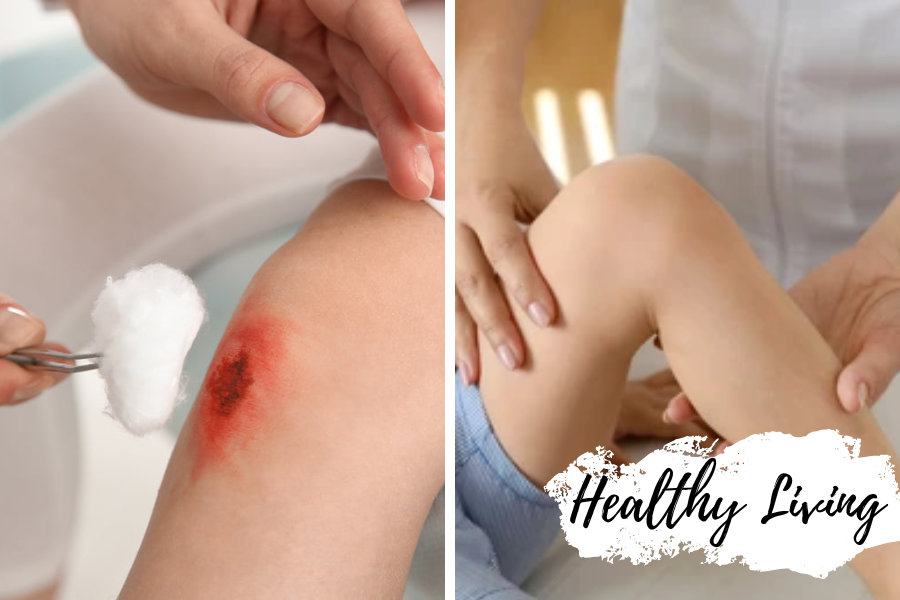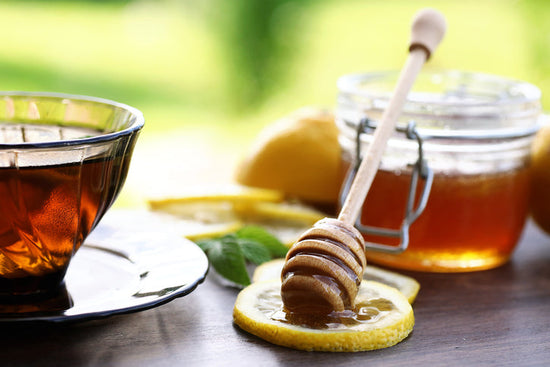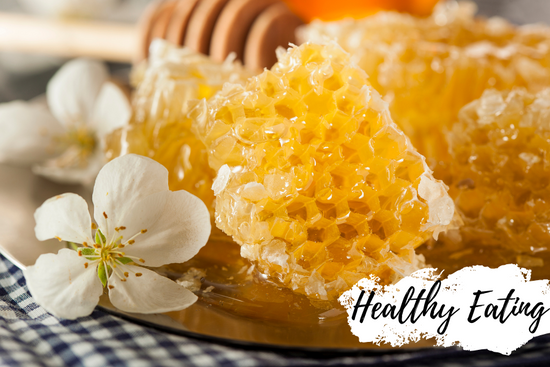

Ancient Times
Throughout history, Honey has been used for medicinal purposes, with the use of Honey on wounds as a wound dressing being one of the most persistent therapeutic uses over time. Ancient Egyptians were among the first beekeepers, being well-established around 3100 BC. Papyrus records depicting a surgical textbook, from possibly 2500 BC, indicate that Honey was used extensively in Egyptian medicine and was a common ingredient in many wound dressings described. Honey provides a moist wound healing environment, which promotes healing and helps manage exudate, while Honey’s antibacterial properties, including the presence of hydrogen peroxide, help prevent and clear infection. Often in historical texts, the type and location of the Honey was specified, thus indicating that the people were well aware of the medicinal properties of Honey from particular floral sources.
Modern Times
In modern times, after the advent and proliferation of modern antibiotic (western) medicine, the use of Honey in Wound Care largely fell out of favor. However, more recently, there has been a rapid spread of bacterial strains that are resistant to antibiotics used in clinical practice. It is now common to have bacteria strains, so-called “superbugs,” that are resistant to all commonly used antibacterial drugs. This situation has created renewed interest in using Honey as a wound care agent and helped spawn extensive research and use of Manuka Honey in registered wound care products.
Therapeutic Benefits of Honey in Wound Care
Honey has been shown to have many properties beyond its’ antibacterial action, including moisturizing benefits that are highly beneficial in skin healing and wound care.
Honey . . .
- Provides a moist wound-healing environment
- Prevents dressings from adhering to the wound surface
- Prevents new skin tissue from growing into dressings
- Manages infection – Serves both to protect the wound from becoming infected and to either kill wound bacteria or prevent it from multiplying.
- Promotes drainage from the wound
- Removes malodor created from the wound – Bacteria in wounds prefer to consume glucose (in Honey) instead of amino acids in the wound bed; thus, lactic acid is produced instead of the normal malodorous sulfur compounds.
- Stimulates faster wound healing
- Provides anti-inflammatory action
- Stimulates immune response
- Reduces pain
- Reduces oxidative stress in the wound
"I have personally used Honey on boo-boos with success, but always consult your physician"

Why Honey Works
Nutritional Value
Honey contains a wide range of nutrients, including minerals, vitamins, and amino acids. It has been reported that wounds heal faster if a nutrient mixture is applied topically to cells in the wound bed. Honey can promote healing to the wound bed by supplying glucose. One example is that glucose allows macrophages to gain energy through glycolysis in the absence of oxygen (due to damaged tissues where oxygen supply is often poor).
Antibacterial Properties
Honey has been shown to have the ability to manage wound infections even in situations where conventional antibiotics and antiseptics have failed. Honey has also been shown to be effective against so-called “superbugs” such as methicillin-resistant Staphylococcus aureus (MRSA) and vancomycin-resistant Enterococci (VRE).
Osmotic Action
Honey has high osmotic action, attracting water molecules from cells. In a wound, the osmotic action of Honey causes an outflow of lymph, which is beneficial to the healing process. This outflow not only provides an improved supply of nutrients to the surface of the wound and a moist wound environment but also promotes skin healing without encouraging bacterial growth.
Acidity of Honey
It has been observed that wounds heal faster in an acidic environment, and conversely, an alkaline pH is associated with wounds that are not healing. Honey is moderately acidic with a pH level typically between 3.2 and 4.5, which, when applied to a wound, acidifies the wound bed. One of the reasons that an acidic environment is friendly to wound healing is that the amount of oxygen released through capillaries increases from 25% for a normal pH level to over 50% in a lower pH environment.
Anti-oxidant Activity
Honey contains a high level of antioxidants. Some studies in which oxidative stress was measured concluded that the control of free radicals due to the anti-oxidant action of Honey was the way in which Honey initiates healing in burns.
Anti-inflammatory Action
In a wound, a short-lived state of inflammation is necessary to initiate the healing process.
However, when inflammation persists, it may cause damage and either slow down or prevent healing. Persistent inflammation may be triggered by events such as bacteria present and the presence of slough in wounds. Honey has both antibacterial action, partly due to the presence of hydrogen peroxide, and helps to remove slough from wounds, both contributing to reducing inflammation.

Uses of Honey in Wound Care
The application of Honey on wounds has been used to successfully treat a wide variety of acute and chronic wounds. In the past 2 decades, successful trials have shown success in treating the following wound types:
- Abscesses
- Burns
- Diabetic foot ulcers
- Donor sites
- Graft sites
- Infected wounds
- Leg ulcers
- Pressure ulcers
- Surgical wounds
- Surgical wound dehiscence
If you have any questions about applying Honey to your wound, follow up with a physician. Before any treatment, always consult with your physician.
How to Uses of Honey in Wound Care
Honey has been used for centuries as a natural remedy for wound care due to its antimicrobial and healing properties, particularly when applying Honey to wounds. It is one of many natural remedies that can enhance healing and provide alternative solutions to traditional treatments. When using Honey for wound care, it's essential to choose a high-quality, sterile, medical-grade Honey, such as Manuka Honey, which has proven antibacterial effects. Here's a general guide on how to use Honey for wound care:
1. Clean the wound: Before applying Honey, ensure that the wound is clean and free from debris. Wash the wound gently with mild soap and water, and pat it dry with a clean, sterile cloth.
2. Choose the right Honey: Opt for medical-grade Honey, preferably Manuka Honey with a high Unique Manuka Factor (UMF) or Methylglyoxal (MGO) rating. These compounds are responsible for the Honey's antimicrobial properties.
3. Apply Honey to the wound: Use a sterile applicator, cotton swab, or a clean fingertip to apply a thin layer of Honey over the wound. Make sure to cover the entire wound area with a thin, even coat.
4. Cover the wound: After applying Honey, cover the wound with a sterile dressing or bandage. This helps protect the wound from external contaminants and keeps the Honey in place.
5. Change the dressing regularly: Depending on the wound's severity and the amount of drainage, you may need to change the dressing and reapply Honey regularly. Follow your healthcare provider's recommendations for the frequency of dressing changes.
6. Monitor for any adverse reactions: While Honey is generally safe for most people, some individuals may be allergic to bee products. Monitor the wound and surrounding skin for any signs of irritation, redness, or itching. If you notice any adverse reactions, discontinue use and consult a healthcare professional.
7. Seek medical advice: If the wound is deep, large, or shows signs of infection, it's important to seek medical attention. Honey can be a complementary treatment, but it's not a substitute for professional medical care.
Important notes:
- Honey should not be used on infants under one year old due to the risk of botulism.
- Always consult with a healthcare professional before using Honey for wound care, especially if you have any underlying health conditions or concerns.
Remember, while Honey, as one of the natural remedies, can be a valuable addition to wound care, it's crucial to consult with a healthcare professional for personalized advice based on your specific situation.
Summary
In conclusion, utilizing Honey for wound care offers a plethora of benefits that cannot be ignored, especially in an era where antibiotic resistance poses significant challenges in healthcare. You can employ Honey not just as a natural remedy but as a scientifically supported component of your wound healing regimen. Its ability to create a moist healing environment, prevent infections, and enhance tissue regeneration, all while reducing pain and inflammation, making it a powerful ally in wound management.
Incorporating Honey, particularly medical-grade varieties such as Manuka Honey, into your wound care approach can significantly accelerate healing and provide relief from discomfort. As you explore Honey's potential, remember the importance of balancing natural treatments with professional healthcare advice. By doing so, you can make informed decisions that bolster your overall health and well-being in the journey towards recovery.
Before you begin any new treatment, it is essential to consult with a healthcare provider to ensure it aligns with your specific health needs and circumstances. Embrace the age-old wisdom of Honey, combined with modern medical insights, to harness its full healing potential and experience the transformational benefits it offers in wound care.
Honey for Wound Care FAQ
Discover the remarkable benefits of Honey for wound care. Here, you'll find concise answers to common questions to help you understand how to effectively incorporate Honey into your wound management routine.
How does Honey help heal wounds?
Honey creates a moist healing environment, prevents infections, and promotes tissue regeneration, making it an exceptional natural remedy for wound care. Its unique composition, rich in antioxidants and antibacterial properties, helps to cleanse the wound and accelerate the healing process. By maintaining a balanced moisture level, Honey not only soothes the affected area but also minimizes scarring. This remarkable substance has been used for centuries, and modern research continues to validate its effectiveness in wound management. Embrace the power of Honey to enhance your healing journey and witness the transformative results it can bring to your skin.
Can I use any Honey for wound care?
For the best results, use raw Honey, which is renowned for its potent antibacterial properties. This natural elixir is unprocessed and retains all its beneficial enzymes and nutrients, making it highly effective in wound care. Raw Honey not only combats bacteria but also reduces inflammation and promotes faster healing. By choosing raw Honey, you ensure that your wound care routine is both natural and effective, harnessing the full power of nature's remedy.
How should I apply Honey to a wound?
To effectively use Honey for wound care, gently clean the wound with mild soap and water to remove any debris or contaminants. Once the area is clean, apply a thin layer of Honey directly onto the wound, ensuring it covers the entire affected area. This will help create a protective barrier against bacteria and promote a moist healing environment. After applying the Honey, cover the wound with a sterile dressing to keep it clean and secure. Remember to change the dressing regularly, reapplying Honey each time to maintain optimal healing conditions. By following these steps, you can maximize the healing benefits of Honey and support your body's natural recovery process.
Are there any risks in using Honey for wounds?
Individuals allergic to bee products should avoid Honey. Always consult with a healthcare professional if uncertain.
What should I do if I notice an adverse reaction?
Discontinue use and seek medical attention immediately.
Is Honey a substitute for medical treatment?
Honey is a complementary treatment; always seek professional medical advice for severe wounds.
















